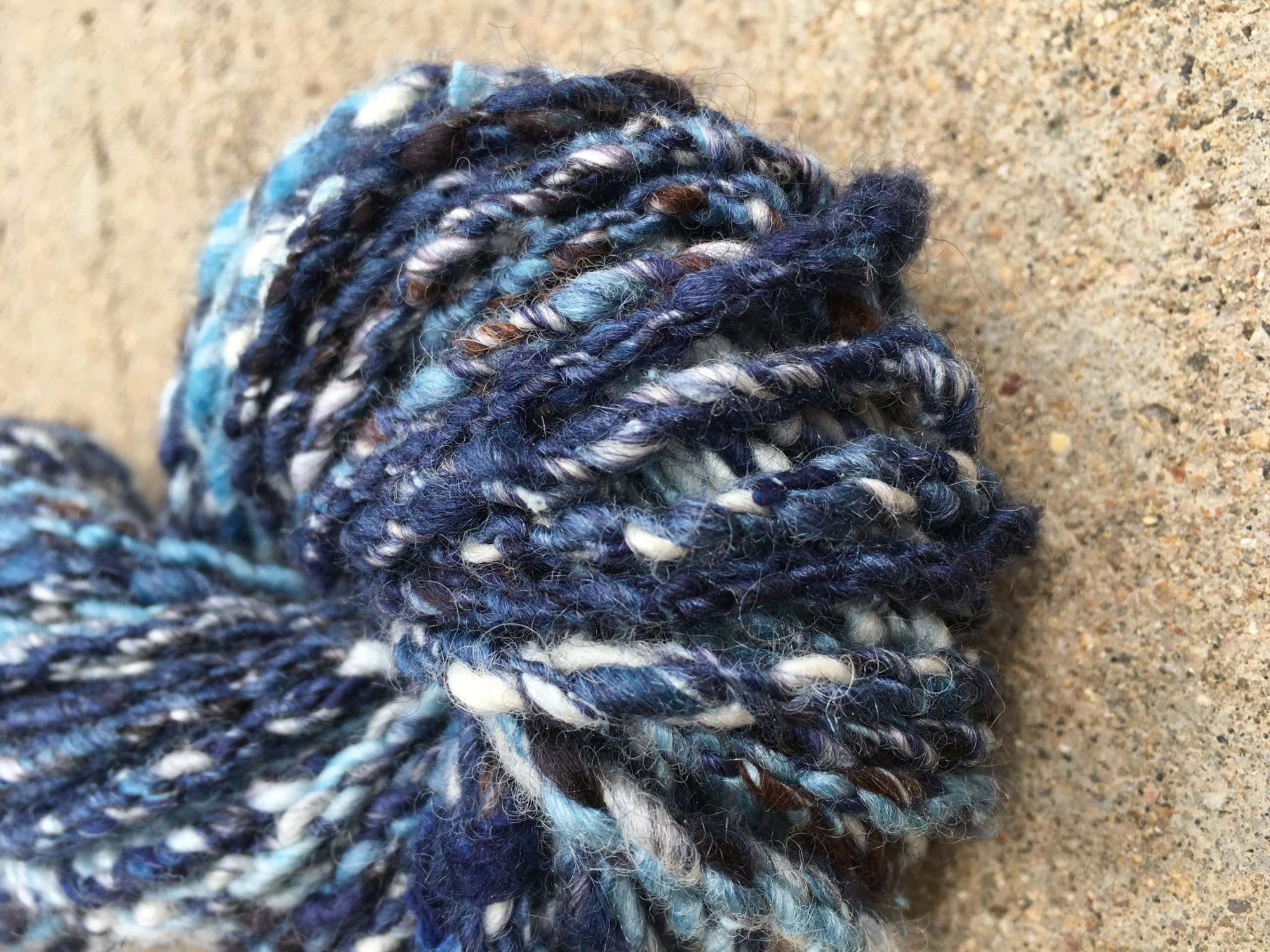By Benjamin Krudwig
When people ask me what I like about spinning, I tell them that I love having complete control over the whole process, and that I can make any yarn that I imagine. With my newfound love of weaving small tapestries, I find myself using more of my textured handspun yarns that I thought I couldn't use in any other project. By weaving in this format, I'm able to use those small quantities of special yarns. Here are some of my top tips and resources for spinning textured yarns.
Use a drop spindle
If I have a small art-batt or fiber bundle, I like to break out my 3" Hi-lo Drop Spindle. This allows me to spin anywhere and everywhere; and with such a small amount of fiber to spin, it goes by in a breeze. The more "hands on" approach to spindle spinning gives me time and focus to direct how my finished yarn is going to look.
Slow down or speed up
Depending on the type of yarn that you're making, you probably going to need to change your spinning speed. For bulky and lofty yarns, a fast draw-in with low twist is necessary. I recommend putting your wheel into Irish tension (bobbin-lead) mode. This involves putting your brake band over the whorl and the drive band over the bobbin. This increases your draw in substantially, by using a larger whorl, little twist is created, allowing the air to get trapped without getting over twisted.
For highly textured art yarns, you may want to use Scotch tension—with a regular amount of draw in, but still with a larger whorl. This allows you to place your texture (with whatever technique you want) without the the yarn getting yanked from your hands. This is particularly good for techniques like coils, wrapping, and other plying methods.
Personally, I love the Sidekick as an art yarn wheel because it tends to be slower than the other wheels in the Schacht line-up. However, each of the wheels can be used to created beautifully textured yarns.
Experiment and sample
Books, DVDs and tutorials are great resources to get you started and provide inspiration, but nothing replaces the act of doing it yourself. As you practice and see what types of yarns you like to make, save small samples of your yarns along with information about how you spun them and with what equipment. Not only does this help get these techniques in your muscle memory, it helps you understand the direct correlation between process and product.
Resources for Spinning Textured Yarns

